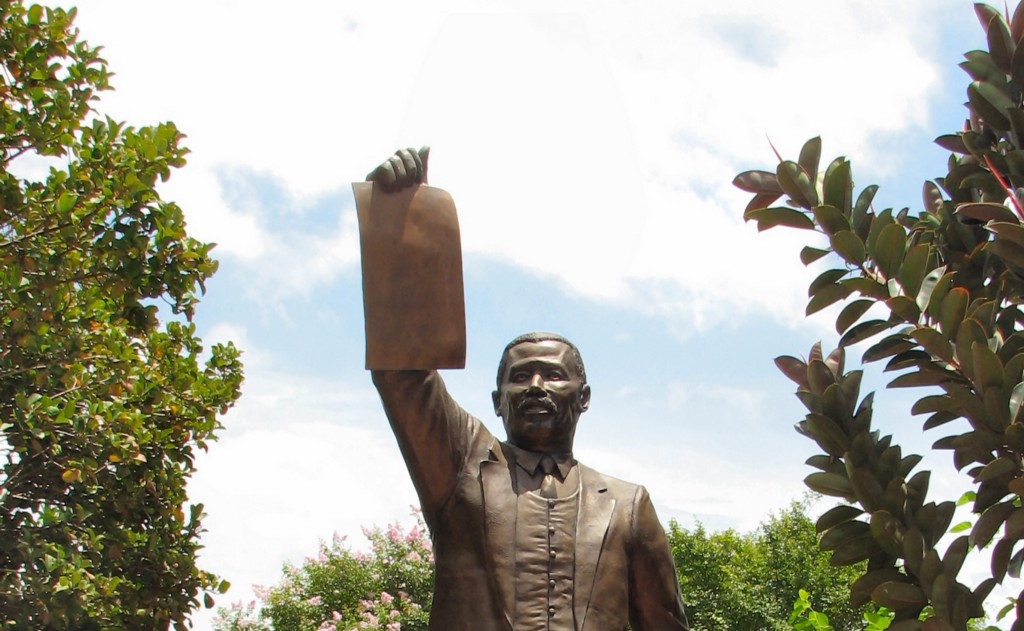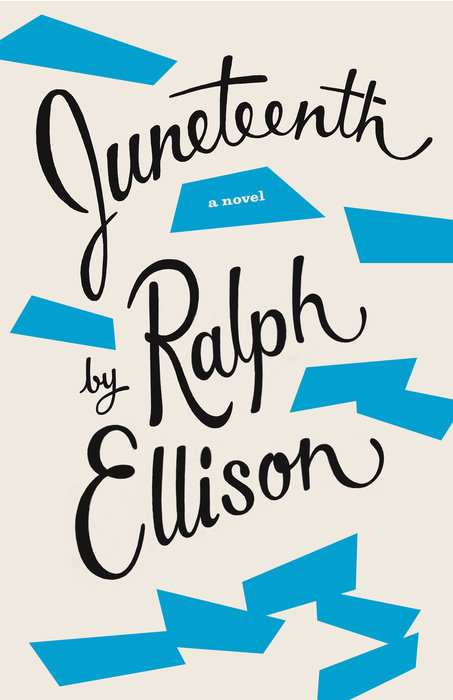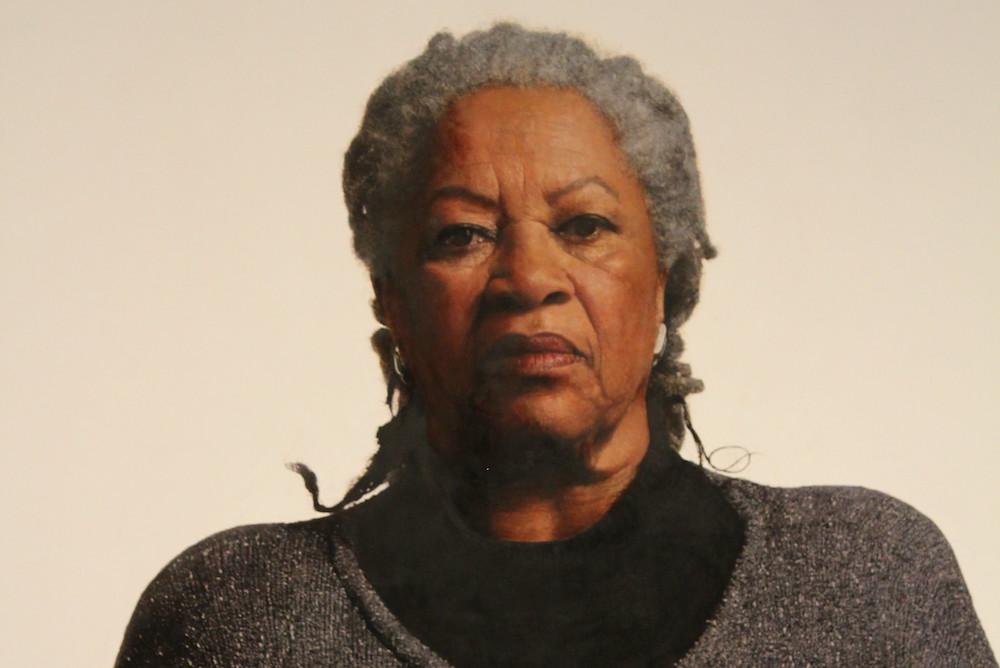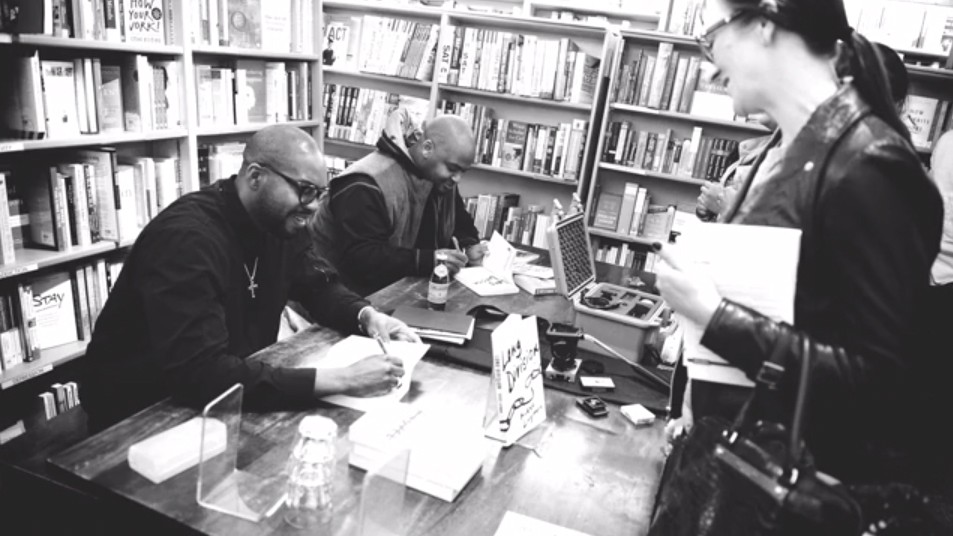Books & Culture
Ralph Ellison’s Unfinished Magnum Opus “Juneteenth” Was 40 Years in the Making
After an early draft was lost to arson in 1967, the manuscript ballooned to more than 2,000 pages by Ellison’s death in 1994

Each month “Unfinished Business” examines an unfinished work left behind by one of our greatest authors.
“The novel has got my attention now,” Ralph Ellison told The New Yorker’s David Remnick in early 1994, “I work every day, so there should be something very soon.” Two months later, Ellison would pass away of pancreatic cancer, and the novel he had been referring to, a long-awaited follow-up to 1953’s Invisible Man was at last uncovered by his executor, John Callahan.

In the introduction to Juneteenth, the version of that novel published in 1999, Callahan described the scene in Ellison’s office on his first day. “Mrs. Ellison walked me into his study […] still wreathed in a slight haze of cigar and pipe smoke. As if to protest [Ellison’s] absence, the teeming bookshelves had erupted in over his desk, chair, computer table, and copying machine, finally covering the floor like a blizzard of ash.” There were over 2,000 pages, some handwritten, some typewritten. Some had been collected in binders and filing cabinets since the 1970s, “painstakingly labelled according to character or episode.” There were mimeographs and there were floppy disks. There were notes scribbled onto newspaper clippings and magazine subscription cards. There were print-outs, first dot-matrix and then laser. The project had survived four decades of advances in word processing technology: Ellison’s typewriter had been replaced by the Osborne Executive computer bought in 1983, which was then replaced by an IBM in 1988. Between them all, Callahan would find a range of overlapping narratives, some long enough to be novels unto themselves — but no finished book.
“‘Beginning, middle, and end,’ Mrs. Ellison mused,” to Callahan. “‘Does it have a beginning, middle, and end?’”
The project had survived four decades of advances in word processing technology.
Ralph and his wife, Fanny Ellison, had chosen John Callahan, a scholar of African-American literature and a close friend, to be the executor of Ralph’s literary estate. Callahan would ultimately publish the 366-page Juneteenth in 1999, and then in 2010, a new, fuller assemblage of excerpts and notes called Three Days Before the Shooting…, clocking in at around 1,100 pages — still just half of what Ellison had left behind. But neither of these books is really the book that Ellison first began envisioning back in 1951 when he, perhaps a little optimistically, wrote to his lifelong friend, Albert Murray, “I probably have enough stuff left over from the other [Invisible Man] if I can just find the form.”
Ellison left all his papers to the Library of Congress, where he had frequently worked. On a C-SPAN BookTV special in 1999, Alice Burney, of the Library’s manuscript division, described how the novel was first brought to them in “reams of chaotic scribbled papers […] hundreds of cartons” and that over “the good deal of 1996 and 1997” these were carefully sorted into “seventy-six acid-free banker’s boxes” and “thirty-two additional flat containers.” Deteriorating pages had to be specially preserved by conservators. It took another six months to then identify separate essays, stories, and various overlapping drafts of his second novel’s many sections. Ellison had never settled on a title for the project, she explained, but the project was referred to as “The Hickman Novel,” the name he had used most frequently.
According to Callahan, Ellison “dreamed of a fiction whose theme was the indivisibility of American experience and the American language as tested by two protagonists.” These are, in Juneteenth, an African-American jazz musician turned con-man named Reverend Alonzo Hickman and the orphaned boy he’s raising, Adam Bliss, of “indeterminate race who looks white.” Bliss becomes part of Hickman’s ministry, following him around as he preaches to and occasionally scams (in the name of God) his fellow men. Bliss finally leaves Hickman, during an evening celebration of “Juneteenth,” the holiday commemorating the end of slavery. He then “reinvents himself in the guise of a moviemaker and flimflam man” and finally becomes a “race-baiting” senator known as Adam Sunraider.
Juneteenth follows this fraught father-son relationship through the first half of the 20th century in the segregated American South, up and down the Mississippi river and the East Coast over the course of 50 years, exploring the “intellectual depths” of both two men, their “values and purposes.”
Through Hickman and Sunraider, Ellison sought to characterize both American and African-American culture, music, religion, politics, values, and desires. Ellison described the novel as a dialogue between himself and Mark Twain and William Faulkner — with some Ernest Hemingway and F. Scott Fitzgerald in there as well. “In conception and execution,” Callahan writes, “Juneteenth is multifarious, multifaceted, multifocused, multivoiced, multitoned.”
Excerpts of it were published, over the years, to eagerly-awaiting fans. Saul Bellow, with whom Ralph Ellison lived in Tivoli, New York, recalled that he had read “a considerable portion of it” and that “all of it was marvelous stuff, easily on a level with Invisible Man.” And James Alan McPherson, after hearing an excerpt of the book in 1969, concluded that “in his novel Ellison was trying to solve the central problem of American literature … I think he was trying to Negro-Americanize the novel form, at the same time he was attempting to move beyond it.” At one point Ellison and McPherson discussed the possibility that truly this was a novel in three volumes, which would each have to be published separately.
The finished novel was originally contracted to be delivered to Random House in 1965, which was then extended to the fall of 1967. Ellison told people that year that he was feeling good about finishing it, working hard on revisions at a summer house that he had bought in the Berkshires. Allegedly the novel was almost finished in November of that year, when a great tragedy occurred.
Allegedly the novel was almost finished in November of 1967, when a great tragedy occurred.
Ellison and his wife returned from shopping to find their house on fire. It would be completely destroyed, with all the furniture and personal possessions inside lost — including the manuscript to Ellison’s novel. Fanny would later lament that she had not been able to break into the burning house to save the book, and sometimes this story involved firemen restraining her from entering the house to do so. “I knew right where it was,” she would tell Callahan, years later.
But a few weeks later, Ellison wrote that while had lost most of the revision work from the summer, he had it all very fresh in his mind and thought it could be redone by early the following year. Friend and critic Nathan Scott Jr., stated in an interview that Ellison had written to him with reassurances about the novel’s state. “Fortunately,” Scott Jr. recalled, “he had a full copy of all that he had done prior to that summer.”
But Ellison would not turn in the manuscript the following year, or the year after that. His story about the damage done by the fire began to change, possibly as a justification for his delays. Ellison’s biographer, Arnold Rampersad, noted that a year after the fire he told one reporter that sadly he had lost 365 pages in the fire, and that this number later grew to be 500 or more. Perhaps on some level this was true, but the larger problem was that, as he wrote privately to critic Richard Kostelanetz, the book had “become inordinately long — perhaps over one thousand pages — and complicated.”
And there may have been deeper layers to the tragedy. Rampersad speculated that while the fire might not have physically consumed his manuscript in progress, the experience had created a trauma that then became a deep wound for Ellison in the years that followed.
By then Ellison had won the National Book Award (he was the first black author to win the prize) and two Presidential Medals. He had joined the American Academy of Arts and Letters and worked at the American Academy in Rome. He’d helped to found the National Endowment for the Humanities, and dined at the White House with President and Mrs. Johnson. Invisible Man had already become a crucial book in the American 20th century canon.
But according to Rampersad, “owning a home in New England” held a private and special meaning to Ellison, in terms of his place in American literature. Ellison felt that living and working there, in that community “placed him in what once had been the center of American artistic and moral glory, to Emerson and Melville and abolitionism.”
Officially, the cause of the fire had been faulty electrical wiring, but years after Ellison’s death, Fanny wrote that he ‘knew, I’m sure, that it was arson, but he made no complaint to the town.’
The destruction of this home by that mysterious fire would afterwards loom “as a cruel symbol” in his mind. Fanny described that they were both “very much traumatized” by this “nightmare image we will long, long see.” Officially, the cause of the fire had been faulty electrical wiring, but years after Ellison’s death, Fanny wrote that he “knew, I’m sure, that it was arson, but he made no complaint to the town.”
Their neighbors sent letters to the Ellisons, expressing their deep sympathy, and a hat was passed around to collect “$205 ‘to get something for your new home.’” Reportedly, the Ellisons would drive up to inspect the ruined house, and then leave again, in melancholy. It would take them more than six years to rebuild their New England home.
Meanwhile, the deadline for the second novel was moved to 1975. Then 1980. And then fourteen more years would pass with Ellison still hard at work, until his death in 1994, just after his 80th birthday.
Juneteenth climaxes in the shooting of the racist Senator Sunraider by a young black man. Over the course of several days in a hospital bed, Sunraider tries to reconcile with Hickman and his memories of his childhood as Adam Bliss, a member of the black Baptist community. Sunraider comes back to the Juneteenth night that he left. He dismisses the holiday initially as “the celebration of a gaudy illusion.” Ninety years later, were the black men and women of America really free?
In his introduction to Juneteenth, Callahan reminds us why the holiday is celebrated on the anniversary of June 19th, 1865, and not September 22nd, 1863, the day the Emancipation Proclamation was delivered by President Lincoln. The reason is that it would take two and a half more years for Union troops to march through the defeated South and reach the thousand men, women, and children enslaved in Galveston, Texas, to relay the news that they were now free. Callahan notes that the delay “is a symbolic acknowledgement that liberation is the never-ending task of self, group, and nation, and that, to endure, liberation must be self-achieved and self-achieving.”
In the end, the dying Senator Sunraider reconsiders. He sees that leaving the black community to present himself as white was an “evasion” of his identity. That night he believed that he had escaped, but ultimately feels that he was cast out from “his true American self,” and that his true kinship is to the people he has betrayed, both in his words and with his political power — he is kin, even, to the young man that shot him. Hickman and the community celebrating Juneteenth had been his family, and whatever his own unknown racial make-up might be, Sunraider ultimately realizes that he is also “somehow black.”
According to Callahan, Ralph Ellison saw a meaningful parallel between his never-ending work-in-progress and the “‘crazy country’ he loved and contended with.” If, at the start of “the Hickman novel,” in the America of 1951, Ellison saw his chance to argue for “the indivisibility of American experience and the American language” and to contend with “race and identity, language and kinship in the American experience,” then how must that story have evolved itself as the next 40 years occurred?
He was working on it when Emmett Till was murdered. And as the Los Angeles riots raged in 1992, Ellison was still working on it.
Two days after the Supreme Court’s decision in Brown vs. Board of Education, Ellison wrote that he had “the whole road [of post-segregationist America] stretched out at it got all mixed up with this book I’m trying to write and it left me twisted with joy and a sense of inadequacy.” He was working on it when Emmett Till was murdered. Working on it during the boycott of the Montgomery bus service and the arrest of Rosa Parks. Working on it when Martin Luther King, Jr. led the march to Selma, and when he was assassinated. Working on it during the summer of 1967, when Loving v. Virginia was decided — working on it at the proud New England home that was soon destroyed. And, 25 years later, as the Los Angeles riots raged in 1992, Ellison was still working on it, by then with his IBM computer and his laser printer — trying to finish a novel that might somehow encompass, and answer, the ongoing struggle of black Americans in the 20th century.
Two thousand pages begins to feel like it could hardly scratch the surface.








